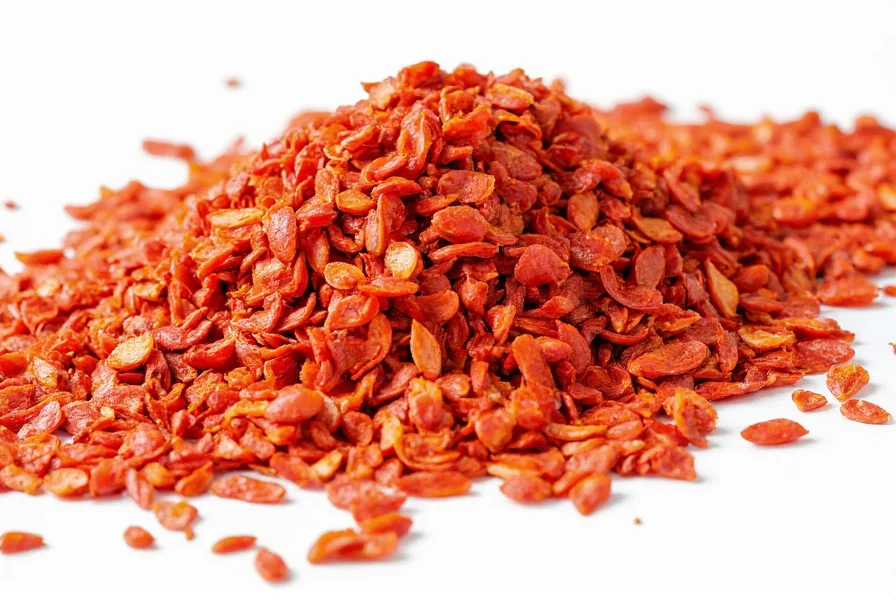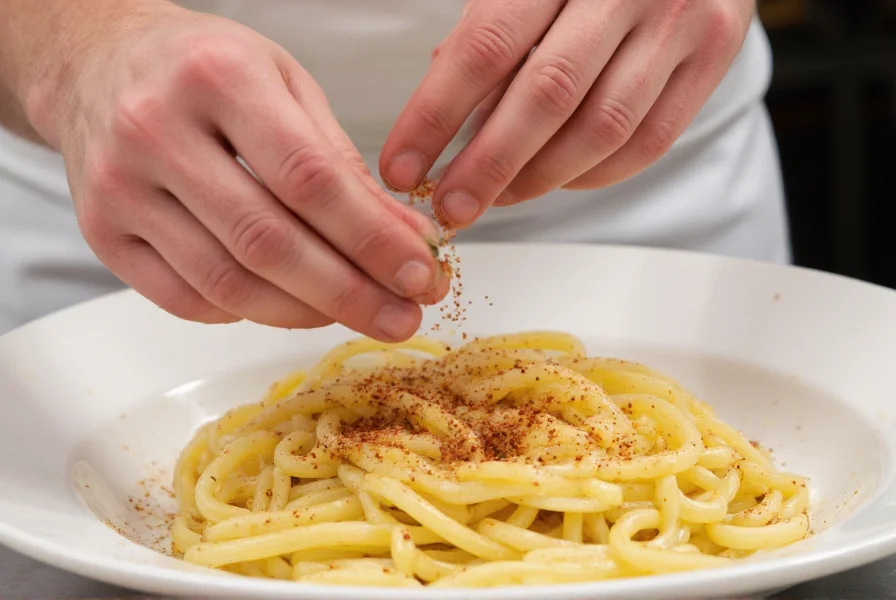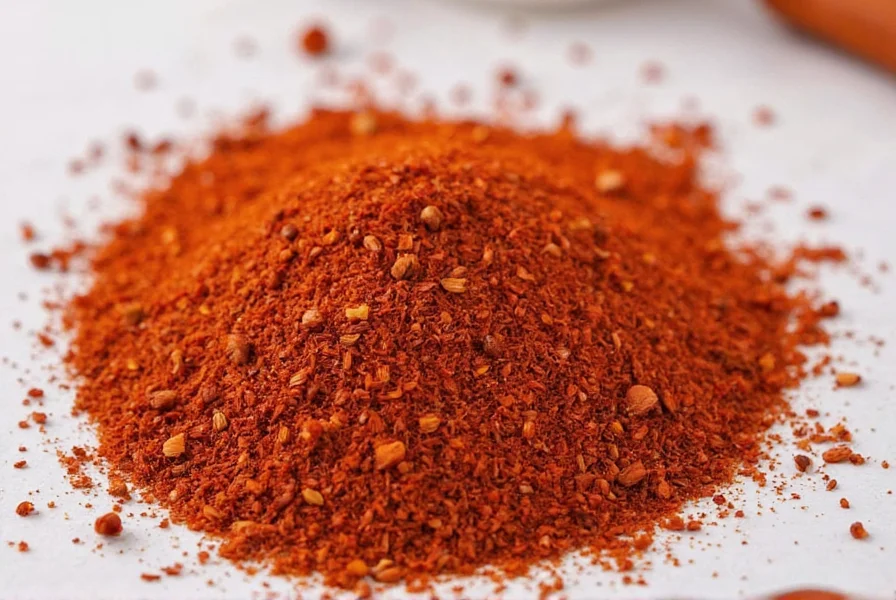When you're exploring what are chili flakes exactly, you're looking at one of the most versatile spice pantry staples available. These vibrant red fragments deliver both heat and subtle fruity notes to countless dishes across global cuisines. Understanding their composition, proper usage, and distinctions from similar products can transform your cooking experience.
What Exactly Are Chili Flakes Made Of?
Authentic chili flakes originate from specific chili pepper varieties, most commonly cayenne peppers, though some blends incorporate Aleppo, ancho, or bird's eye chilies. The production process involves:
- Harvesting fully ripened red peppers
- Washing and drying them thoroughly (either sun-dried or using dehydrators)
- Removing stems while often retaining some seeds for added heat
- Carefully crushing the dried peppers to achieve uniform flake size
The resulting product contains capsaicin—the compound responsible for heat—as well as natural sugars and acids that contribute to its complex flavor profile. High-quality chili flakes maintain their vibrant red color and potent aroma when properly stored.

Chili Flakes vs. Crushed Red Pepper: Understanding the Difference
Many home cooks wonder about the difference between chili flakes and crushed red pepper. While often used interchangeably in recipes, there are notable distinctions:
| Characteristic | Chili Flakes | Crushed Red Pepper |
|---|---|---|
| Composition | Primarily dried pepper flesh | Mixture of seeds, stems, and flesh |
| Texture | Uniform flake size | Variable particle sizes |
| Heat Level | More consistent heat | Variable heat (seeds hotter than flesh) |
| Flavor Profile | Cleaner, fruitier notes | More bitter, earthy notes |
When following recipes that specify chili flakes vs crushed red pepper, understanding these differences helps achieve the intended flavor profile. For delicate dishes where consistent heat matters, chili flakes typically perform better.
Popular Varieties and Their Heat Levels
Not all chili flakes deliver the same level of heat. The types of chili flakes available vary significantly based on their pepper origin:
- Cayenne Flakes (30,000-50,000 SHU) - Most common variety with bright heat and slight fruitiness
- Aleppo Flakes (10,000-15,000 SHU) - Syrian/Middle Eastern variety with moderate heat and citrus notes
- Arbol Flakes (15,000-30,000 SHU) - Mexican variety with sharper, cleaner heat
- Thai Bird's Eye Flakes (50,000-100,000 SHU) - Intensely hot with floral notes
When selecting what kind of chili flakes to buy, consider your dish's requirements. Delicate sauces might benefit from milder Aleppo flakes, while robust meat dishes can handle the intense heat of Thai varieties.
How to Use Chili Flakes in Cooking
Mastering how to use chili flakes in cooking elevates dishes from ordinary to extraordinary. Chefs employ several techniques:
- Dry Application - Sprinkle directly onto pizza, pasta, or roasted vegetables before serving
- Bloomed in Oil - Heat flakes in olive oil first to release flavors without burning (ideal for pasta sauces)
- Infused Vinegar - Create spicy vinegar by steeping flakes in vinegar for weeks
- Marinade Component - Combine with oil, garlic, and herbs for meat or vegetable marinades
For those exploring what to use chili flakes for, consider these applications:
- Add to tomato-based pasta sauces for depth
- Sprinkle over avocado toast for a spicy breakfast
- Mix into mayonnaise for spicy dipping sauce
- Enhance Bloody Mary cocktails
- Season roasted nuts for spicy snacks

Storage Recommendations for Maximum Freshness
Proper storage directly impacts how long chili flakes last and maintains their potency. Follow these guidelines:
- Store in an airtight container away from light and heat
- Keep in a cool, dark pantry (not above the stove)
- Refrigeration extends shelf life to 2-3 years
- Freezing preserves potency for up to 4 years
Signs your chili flakes have gone bad include faded color, loss of aroma, or musty smell. Properly stored flakes maintain vibrant red color and potent aroma for 1-2 years at room temperature.
Nutritional Benefits and Considerations
Beyond their culinary uses, chili flakes offer several health benefits of chili flakes:
- Rich in capsaicin, which may boost metabolism
- Contains vitamin C and antioxidants
- May support heart health through capsaicin's effects
- Low calorie addition to dishes (about 3 calories per teaspoon)
While generally safe, those with sensitive digestive systems should moderate their how much chili flakes to use in dishes. Start with small amounts (1/8 to 1/4 teaspoon) and adjust to taste.
Substitution Options When You Run Out
If you're wondering what can I use instead of chili flakes, several alternatives exist:
- Crushed Red Pepper - Use 1:1 ratio, but expect slightly different heat profile
- Chili Powder - Use half the amount (powder is more concentrated)
- Fresh Chilies - Finely chop serrano or jalapeño (remove seeds for less heat)
- Hot Sauce - Add gradually to achieve desired heat level
Understanding these chili flakes substitution options ensures your recipes maintain their intended flavor profile even when your preferred spice runs out.
Frequently Asked Questions
Are chili flakes the same as red pepper flakes?
Yes, chili flakes and red pepper flakes generally refer to the same product—dried, crushed chili peppers. The terms are used interchangeably in most regions, though some specialty stores might differentiate based on specific pepper varieties used.
How hot are chili flakes compared to other spicy ingredients?
Standard chili flakes (typically cayenne-based) range from 30,000 to 50,000 Scoville Heat Units (SHU). This makes them hotter than paprika (500-1,000 SHU) but milder than pure capsaicin (16 million SHU). They're comparable to fresh serrano peppers but less intense than habaneros.
Can I make my own chili flakes at home?
Yes, making homemade chili flakes is straightforward. Dry ripe red chilies thoroughly (using a dehydrator or low oven), remove stems, then crush the peppers using a mortar and pestle or food processor. Store in an airtight container away from light for best results.
Do chili flakes lose heat over time?
Yes, chili flakes gradually lose potency over time as capsaicin degrades. Properly stored (in a cool, dark place in an airtight container), they maintain significant heat for 1-2 years. Refrigeration or freezing extends their potency for several more years.
Are there any safety concerns with handling chili flakes?
When handling chili flakes, avoid touching your eyes or sensitive skin areas as capsaicin can cause irritation. If you experience burning, use oil or milk to neutralize the capsaicin rather than water, which can spread the compound.











 浙公网安备
33010002000092号
浙公网安备
33010002000092号 浙B2-20120091-4
浙B2-20120091-4